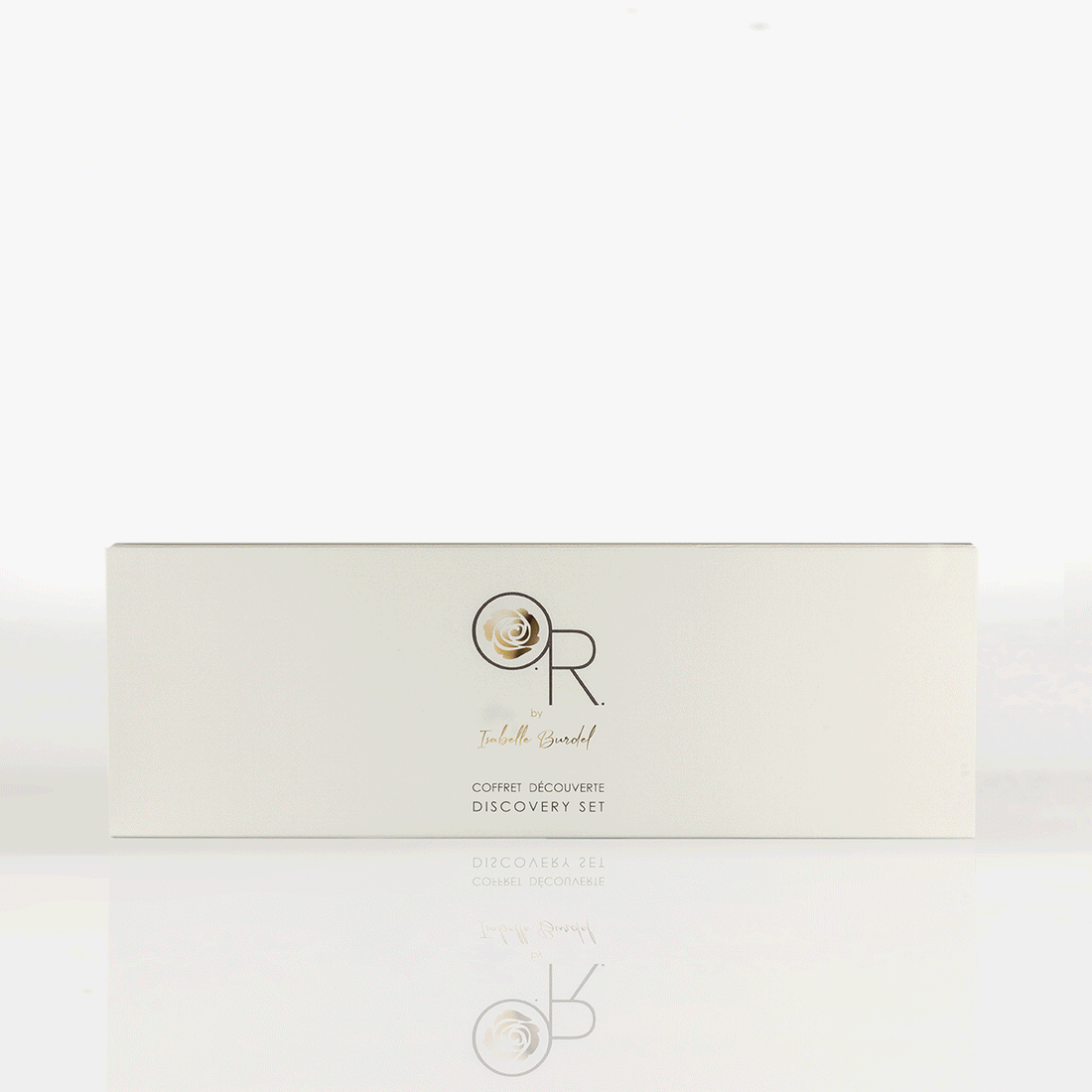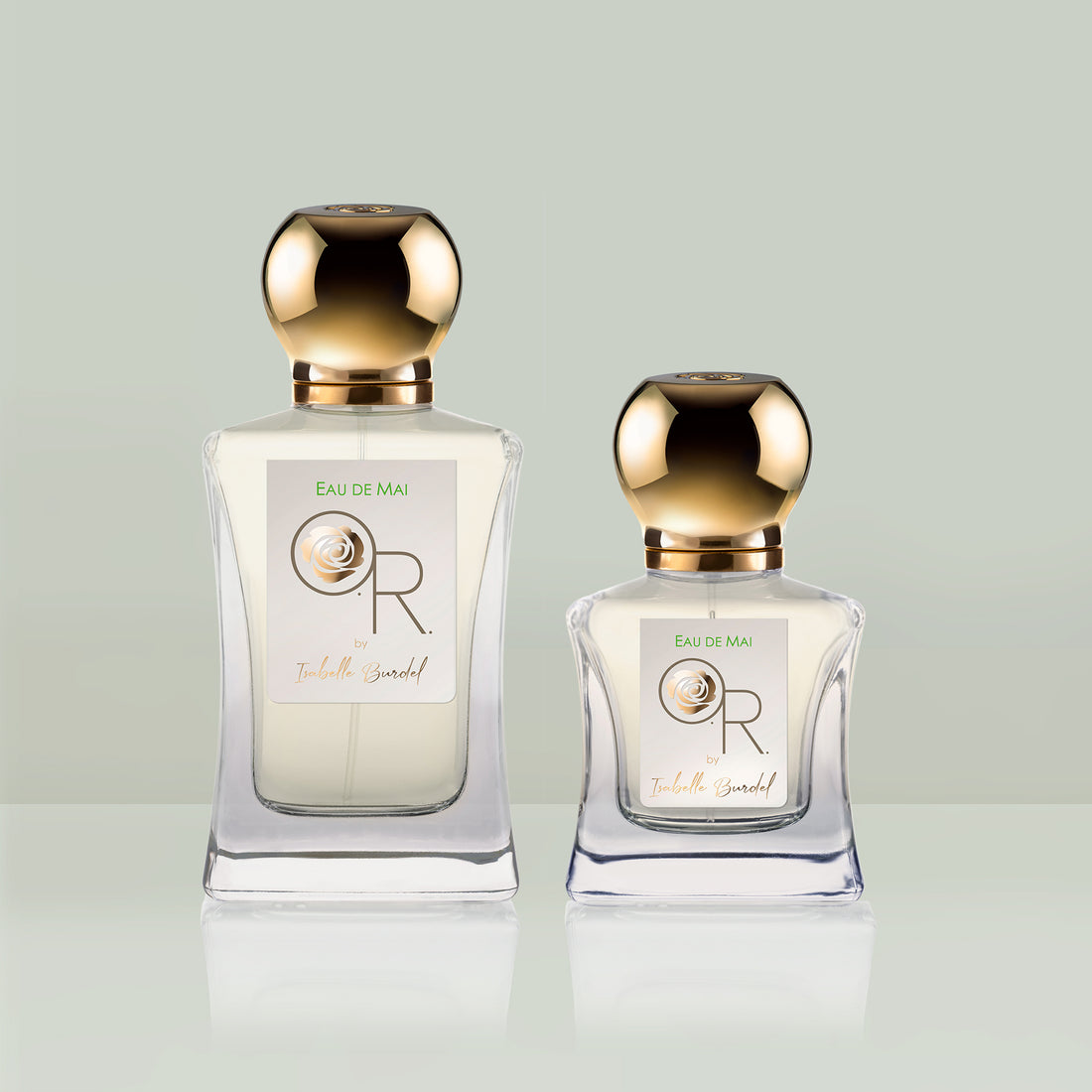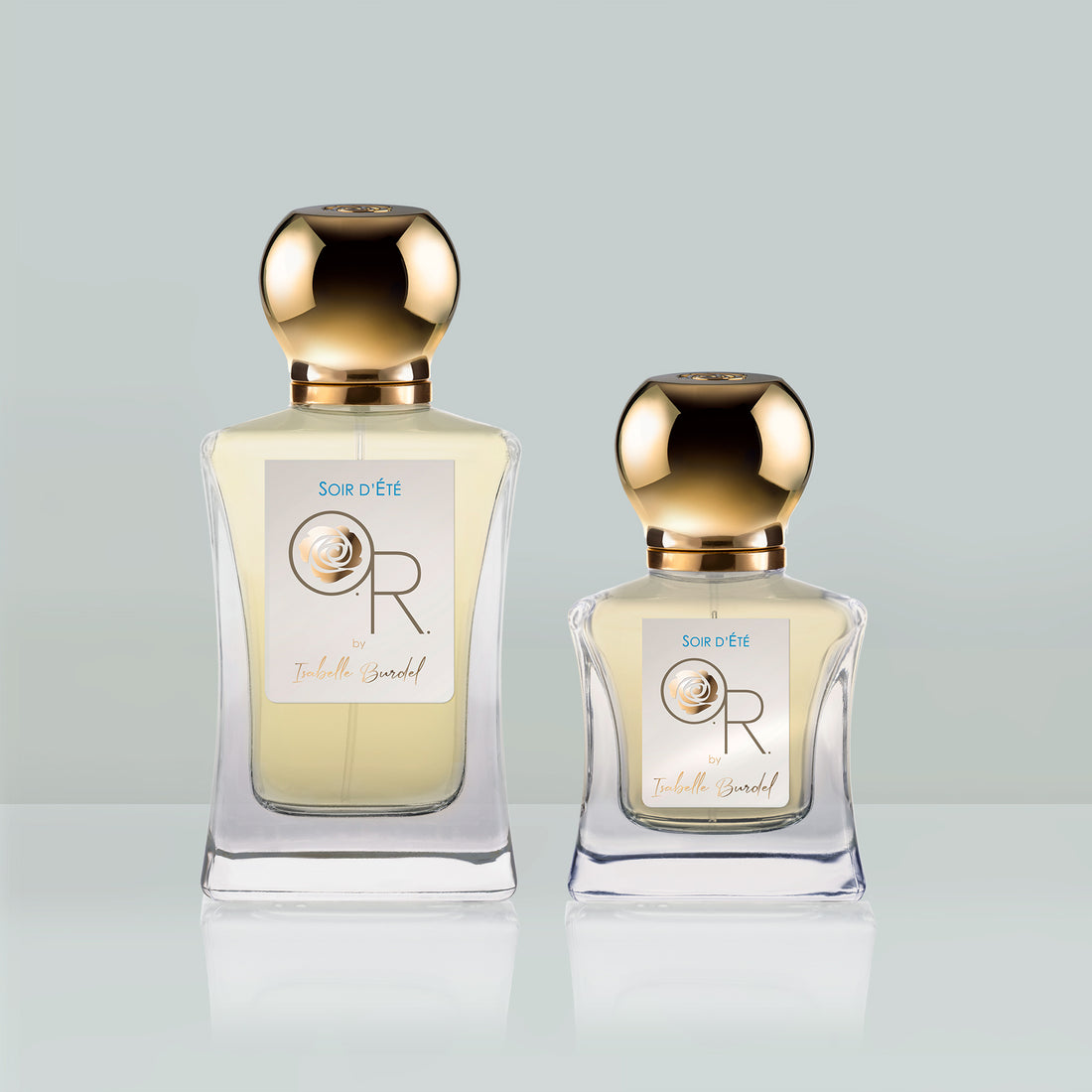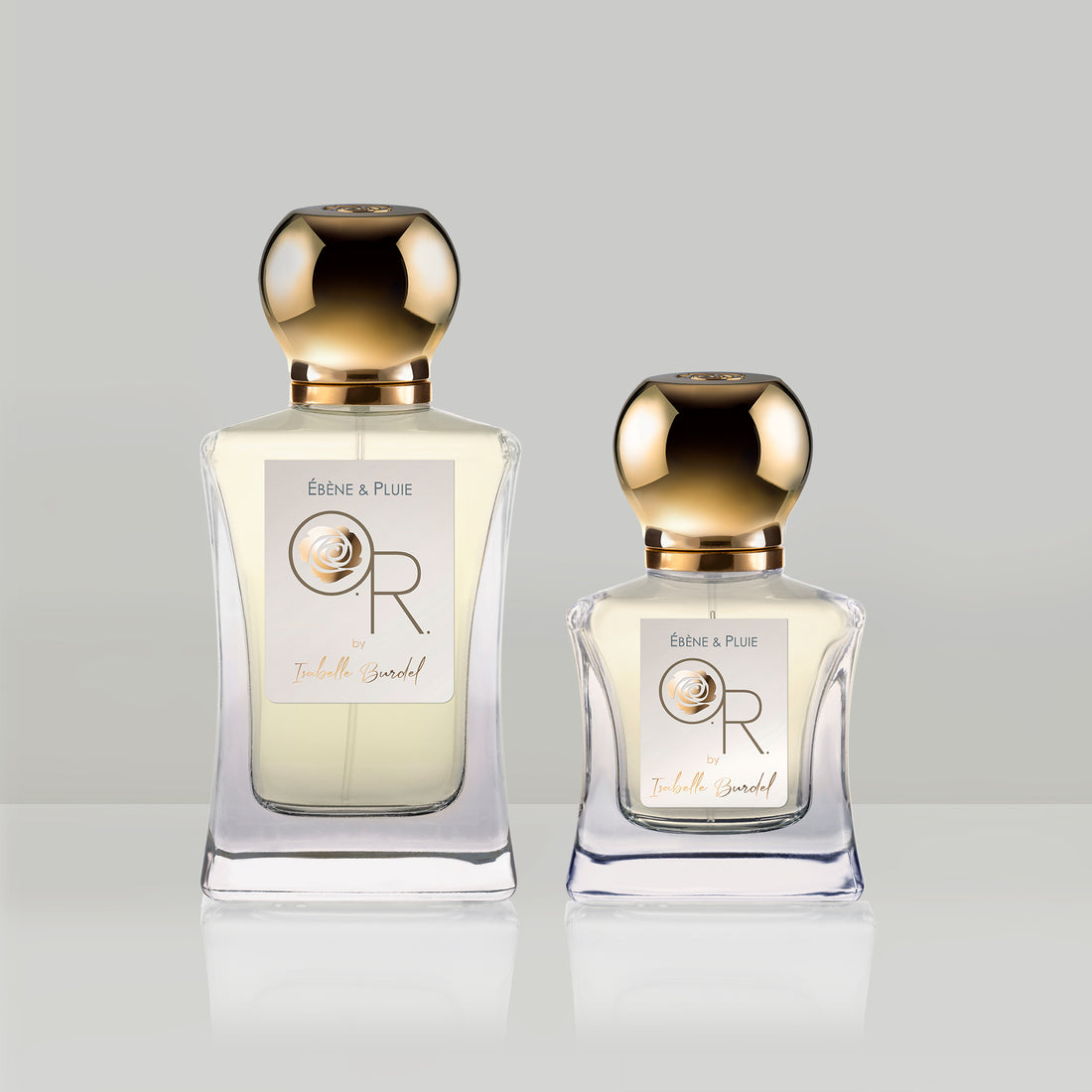While the rose indeed carries many symbols in the language of flowers, in the world of perfume, it is equally indispensable. Depending on its color, it embodies love, passion, devotion, or sensuality in turn. In Greek mythology, it is associated with Aphrodite, the goddess of love. But what about the rose in perfumes ? What precious secrets does the one known as the queen of flowers hold?
The rose perfume : a perfume with a history
Celebrated since antiquity by numerous poets, writers, and painters, the queen of flowers fascinates us, not only for its exquisite scent but also for the beauty of its colors. The rose is an ancient flower, as it first appeared in the form of a wild rose variety nearly forty million years ago.
Botanically, there are nearly 700 ornamental rose varieties, but perfumers only use two: the Centifolia rose and the Damask rose. These two roses differ in fragrance and cultivation.
The first, round, green, and honeyed, is an icon of Grasse, the perfume capital. The Damask Rose, lighter, fruity, and spicy, originates from Persia but is now cultivated in Morocco, Turkey, and Bulgaria.
The Centifolia rose, also known as the "Hundred-Petal Rose," was born in Holland at the end of the 16th century. It resulted from a crossbreeding of several varieties: the Gallica rose, the Musk rose, the Dog rose, and the Damask rose.
On the other hand, the Damask rose originated from a crossbreeding between the Gallica rose, cultivated between Mesopotamia and Palestine, and the Phoenica rose, also grown in the Middle East. The Damask rose is also called the rose of Damascus, the city where the Crusaders discovered it. This rose was highly favored by Nero, who made it the flower of excess in antiquity. In the 4th century AD, it acquired a completely different image when the Church associated it with the cult of Mary.
The rose in perfumery developed significantly thanks to Arab culture, which is believed to have introduced it to the Dades Valley in Morocco, Bulgaria, and later Turkey.
The perfume of Centifolia rose, pride of Grasse
The Centifolia rose, also known as the May Rose because it is harvested in spring, gained fame through Chanel “No. 5” and the fields of Grasse worldwide. However, despite the region producing and processing 2000 tons of roses until the 1950s, this flourishing activity declined with the emergence of synthetic molecules and more affordable imported ingredients.
Buyers sometimes went as far as "cutting" natural materials to save costs. Many farmers faced great difficulties and gradually abandoned their lands. Real estate gradually encroached upon Grasse, at the expense of cultivable fields. It was thanks to the Association of Exceptional Flowers of the Pays de Grasse that rose cultivation found a new lease on life in the early 2000s.
The scent of this rose, with its green, round, and honeyed nuances, emanates from the fields in the morning during harvesting. This process begins early in the morning and concludes before noon to prevent the heat from altering the flower's scent. Harvesting is a completely manual task, an ancient regional skill done with a firm yet delicate touch to avoid damaging the rose flowers. From early May to early June, jute bags filled with flowers are transported daily to production sites for solvent extraction to extract the rose’ scent.
The flowers are poured into tanks filled with hexane, ethanol, or supercritical CO2. This waxy and fragrant paste is then washed again in a hydroalcoholic solution, which is later filtered to retain the fragrant parts soluble in alcohol and obtain the precious Centifolia rose absolute. It takes about 750 kilograms of rose petals to produce one kilogram of absolute, which costs around 10,000 euros, making it a costly material.
The perfume of Damask rose, cultivation, and portrait
Because Grasse's rose is rare, Damask rose is often preferred and considered more modern. Its origins trace back to the time of the Crusades.
Today, it is cultivated in Morocco, Turkey, and Bulgaria. Through distillation, which relies on the ability of water vapor to absorb the aromatic compounds of a plant, an essential oil with a spicy, lemony, and fruity scent with lychee undertones is obtained from this rose.
It is also possible to use solvent extraction to obtain a Damask Rose absolute. For this flower, the essential oil is more expensive because it takes no less than 3 to 5 tons of rose petals to produce one kilogram of essential oil, while you can obtain six times more absolute with the same quantity of flowers.
The perfume of rose and its countless facets
Due to its varied nuances, the rose offers a wide playground for perfumers. Sophisticated, it is composed of around 300 molecules, an impressive organic complexity that makes it a timeless muse.
Sometimes angelic or dark, fresh or sensual, it can renew itself infinitely. Depending on the materials it encounters, the rose, the queen of flowers and the perfumer's palette, will reveal different facets.
One of the significant fragrances featuring Centifolia Rose, enhanced by synthetic notes, is Coty's “Rose Jacqueminot” (1904), one of the brand's early successes.
An essential part of floral bouquets, the rose pairs well with jasmine, the iconic duo of Chanel “No. 5” (1921). The marriage of these two Grasse icons with powdery aldehyde notes is a true archetype of perfumery. This combination has inspired many great successes since the 1920s.
The scent of the rose can also be worked on with a fresh approach, evoking morning dew. It can be paired with watery, green, or musky notes to create a vegetal or clean rose.
The rose also adds color to cyprus and woody accords. A classic in perfumery, the rose and patchouli form an enchanting duo. The spicy notes of Damask rose blend perfectly with the woody nuances of patchouli, exhaling a dark and warm dimension. “Aromatics Elixir” by Clinique, a cyprus rose with assertive femininity (1971), exemplifies this. In the niche category, the rose and patchouli embrace in a mysterious embrace for “Portrait of a Lady” by Editions de Parfum Frédéric Malle (2010).
The queen of flowers also joins powdery accords, where it coexists with iris and violet, exuding a delightfully retro and feminine charm. One need only smell Yves Saint-Laurent's “Paris” (1983) to be convinced.
Finally, Lancôme's “Trésor” (1990) paved the way for floral fruity fragrances, where the rose is adorned with a velvety peach note on a bed tinged with sandalwood. For Rochas' “Tocade” (1994), Maurice Roucel created a rose with a vanilla sweetness, unmistakable among a thousand.
Rose perfume at Olfactory Revelation
With 35 years of experience, Isabelle Burdel has been an independent perfumer for nearly 20 years. In her private salon in Cannes, she creates bespoke perfumes for various personalities seeking an exclusive olfactory signature. She translates her clients' emotions into scents to reveal their personalities. This expertise is now unveiled within her brand, Olfactory Revelation.
Among the nine fragrances in the collection, the rose infuses “Chant de Roses” with its purple and deep hues. A floral and woody composition, freshly touched with a hint of bergamot at the top. Then the rose unfolds its fruity, honeyed, and spicy accents on a woody base with chypre undertones. A modern and sophisticated rose, adorned with a hint of violet, lingers on a bed of patchouli, moss, and resins. Moss and patchouli emphasize its green nuances with an earthy dimension, while balsamic notes clothe it in warmth. An enveloping perfume with a confident trail, where the rose reveals itself as mysterious and enchanting.
If you're intrigued by rose perfumes, don't hesitate to order Olfactory Revelation's discovery set! It's an opportunity to explore the multiple facets of this timeless flower and, above all, to try "Chant de Roses" on your skin, a creation that showcases a dark and intoxicating rose.






